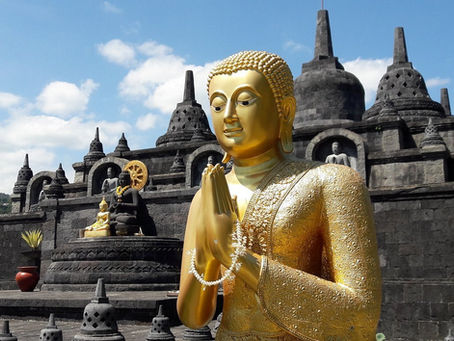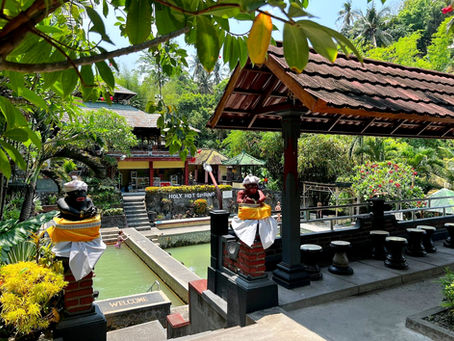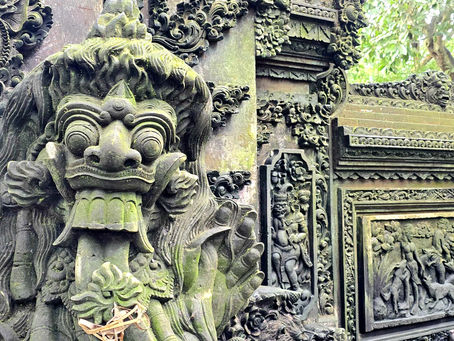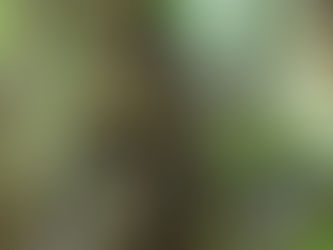top of page

GLOBAL SHANANIGANS

Search


Brahmavihara Arama Buddhist Monastery
Perched 300 meters above Northern Bali’s hills, Brahmavihara Arama is the island’s largest Buddhist monastery, offering breathtaking views over rice terraces and the Bali Sea. Though built in the 1970s, this tranquil sanctuary has quickly become a must-visit spiritual retreat away from the usual tourist paths.
Shannon


Banjar Holy Hot Springs
Believed to have been used for nearly a thousand years, the Banjar Hot Springs, known locally as Permadian Air Panas, hold deep spiritual and cultural significance dating back to at least the 10th century. Oral traditions and local belief suggest these sacred springs have long served as a place for ritual purification and healing, well before the arrival of modern tourism.
Shannon


Kerta Gosa Pavilion
Steeped in centuries of judgement, where kings and nobles once wielded verdicts beneath the watchful gaze of the gods, Kerta Gosa stands as a chilling testament to Bali’s intertwining of law, ritual and cosmic retribution, a sacred space where punishment was vivid, divine, and absolute. Beneath the flaking frescoes that depict the torments of the underworld, the echoes of those rulings linger like a cold breath, a haunting reminder that justice here was relentless and inescap
Shannon


Tanah Lot - Bali’s Famous Sea Temple
One of Bali’s most revered and iconic sea temples, perched on a rocky outcrop along the island’s west coast, is Tanah Lot. Set about 300 metres offshore, the shrine faces the unyielding tides of the Indian Ocean, its striking presence blending natural drama with deep spiritual meaning. Though calm and picturesque from afar, the temple is regarded as a threshold where divine forces are worshipped and balance is maintained against darker energies.
Shannon


Klungkung Royal Palace
Rising from the legacy of the Gelgel kingdom and the distant glory of the Majapahit Empire, Klungkung Palace was built in 1686 as the proud heart of a fractured Bali. For centuries it stood as a symbol of royal prestige, until 1908, when Dutch fire and a blood soaked Puputan reduced its grandeur to ruin, leaving only whispers of power, betrayal and the ghosts of a kingdom that refused to kneel.
Shannon


Sacred Flames - Ubud’s Cremation Temple
Perched on the shadowed fringe of Ubud’s Sacred Monkey Forest, Pura Prajapati stands as a silent witness to centuries of life, death and the thin veil between them. Built around 1350AD, this moss cloaked cremation temple is one of the forest’s three ancient sanctuaries, yet its presence carries a weight far beyond stone and mortar.
Shannon


Blood and Shadows - Unmasking the Leyak’s Curse
In the dark heart of Balinese folklore, the Leyak is one of the island’s most feared witches but they do not act alone. They serve Rangda, the merciless queen of black magic, whose monstrous face and pitiless power embody Bali’s deepest terrors.
Shannon


The Great Temple of Death
Agung Padangtegal Temple is one of the primary temples located within the Sacred Monkey Forest Sanctuary in Ubud, Bali. Established in the late 14th century, the temple serves as a key spiritual site for the local community, dedicated primarily to the worship of Hindu deities and various ancestral spirits. It is considered the main temple of the forest complex and plays a central role in religious ceremonies.
Shannon


Goa Gajah Temple
Mystery surrounds the true origins of Goa Gajah, a 9th century cave temple complex near Ubud in central Bali. Rediscovered by Dutch archaeologists in 1923 after centuries hidden beneath dense vegetation, the site holds no actual link to elephants, despite its name. The term “Elephant Cave” likely evolved from Lwa Gajah, an old name associated with the nearby river, not from any animal symbolism found within the temple itself.
Shannon


The Sacred Nāgas of Bali - Guardians of the Island
In the mystical landscape of Bali, where volcanoes brood above emerald rice terraces and the sea whispers ancient secrets, serpentine beings known as Nāgas hold a revered place in the island’s cosmology. These mythical serpent deities, often depicted as long, dragon-like creatures adorned with golden crowns and shimmering scales of green and gold, are considered powerful protectors of water, fertility and the spiritual balance between the underworld, earth and the heavens.
Shannon


In the Shadow of Agung - Sidemen’s Sacred Legacy
Tucked into the emerald folds of eastern Bali, Sidemen is a village preserved in time, its quiet beauty masking layers of history, mysticism & ancient power. Long before it became a retreat for travellers, Sidemen was the cradle of sacred agricultural rituals & spiritual learning. Oral traditions trace the village’s origins back to Bali’s earliest kingdoms, once a training ground for priests drawn to the area's potent energy and its proximity to Mount Agung, the island’s most
Shannon


The Moon of Pejeng - Temple of the Bronze Drum
Pura Penataran Sasih, founded in 1266 AD, was once the state temple of the Pejeng kingdom. Set in the fertile Petauan River valley, it reflects Bali’s ancient ties between ritual and agriculture. At its centre lies the Moon of Pejeng, a 2000 year old bronze drum and the largest single-cast of its kind in the world.
Shannon


The Ogoh Ogoh Museum of Demons
Each March, as Bali prepares for the eerie silence of Nyepi, grotesque effigies of demons and witches are paraded through the streets before being set aflame. Yet not all are consigned to fire, some escape their ritual death and find a resting place in the Ogoh Ogoh Museum, a shadowy graveyard of towering statues where the spirits of chaos seem forever frozen in time.
Shannon


Sangeh Monkey Forest
Sprawled across 14 hectares of ancient forestland, Sangeh Monkey Forest, also known as Obyek Wisata Bukit Sari Sangeh, is one of Bali’s most enchanting natural sanctuaries. Towering nutmeg trees, some reaching over 40 metres tall, dominate the landscape, creating a high green canopy that diffuses the tropical light and hushes the sounds of the outside world. But what truly sets this forest apart is its origin story. According to legend, the trees were not planted, they walked
Shannon


The Royal Palace of Ubud
In the heart of Ubud, the Royal Palace stands as a stunning showcase of Bali’s rich history and artistic spirit. Built around 1640, this elegant complex of pavilions and gardens offers a glimpse into the lives of the island’s royal family while pulsating with cultural performances and traditional ceremonies that keep Ubud’s heritage alive.
Shannon


Bali’s Buried Past - Blood on the Island of the Gods
One of the most horrific chapters in Balinese history occurred during the anti communist purges which swept across Indonesia in the mid 1960's and barely anyone dares talk about it. In the years leading up to the massacre, Bali was already a fractured island, mirroring the deepening political and social divisions across Indonesia.
Shannon


Taman Ayun - The Royal Playground
Encircled by a wide moat and wrapped in manicured geometric gardens, Pura Taman Ayun looks more like a mythical vision than a temple. This 17th-century royal fortress served as the royal temple of the once mighty Mengwi kingdom and was designed not just to honour the gods but to remind subjects of the divine order that placed kings just beneath them.
Shannon


Batuan Temple
In the heart of Batuan village stands Pura Puseh Desa Batuan, one of Bali’s oldest and most spiritually charged temples. Founded in 1020 AD and recorded in Balinese historical texts for over a millennium, it is rooted in something far older, believed to have been built atop a megalithic stone circle, echoing the ancient power of Stonehenge, where ancestral rites were once performed.
Shannon


Pura Ulun Danu Batur - The Temple of Ash and Mercy
First established in the 17th century, Pura Batur is one of Bali’s most venerated temples, second only to Pura Besakih on the sacred slopes of Mount Agung. Perched at roughly 900 metres above sea level, this mountain sanctuary overlooks the dramatic caldera of Mount Batur, an active volcano steeped in myth and raw geological power.
Shannon


Gunung Lebah - The Birthplace of Ubud
Rising from the heart of Ubud, Gunung Lebah Temple was founded in the 8th century by the Indian priest Rsi Markandeya as a sanctuary for meditation and spiritual retreat. Nestled at the confluence of the Wos and Pakerisan rivers, where their waters merge to form the sacred Campuhan, the site hums with serene energy, surrounded by forests rich with medicinal plants believed to heal both body and soul.
Shannon
bottom of page